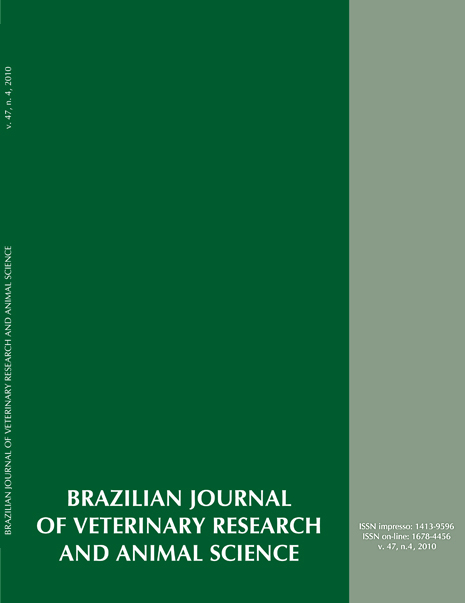Different diameters of diets about weight gain, growing, survival and sex reversal to Nile tilapia (Oreochromis niloticus)
DOI:
https://doi.org/10.11606/issn.1678-4456.bjvras.2010.26825Keywords:
Oreochromis niloticus, Feeding, Milling degree, LarvaeAbstract
The aim of this work was to evaluate the effects of three different diameters of crumble diets (0.25, 0.35 and 0.50 mm) on weight gain, growing, survival and sexual proportion to Nile tilapia (Oreochromis niloticus) larvae with 30, 60 and 90 days of age. In the first 30 days of age larvae were submitted to sex reversion with diets containing the hormone 17 α-methyltestosterone in a dosage of 60mg/kg of ration, respecting the different diameters and after this period, larvae were measured, weighed and counted for calculation of survival taxes. For the biometrical parameters as weight and total length a completely randomized design was used in subdivided installments with three treatments and three repetitions, considering installments the three diameters of diet and the sub installments, the three ages. In the end of this study, fish fed with diets of grain diameters 0.35 and 0.25 mm obtained the best results for weight gain (14.42 g and 13.36 g) and total length (83.13 mm and 82.72 mm), although these results were not statistically significant, and diets with grain diameters 0.50 and 0.35 mm resulted in 96,66 % and 93,33% of males, respectively, after histological analysis of gonads, without statistics differences between the treatments.Downloads
Downloads
Published
2010-08-01
Issue
Section
UNDEFINIED
License
The journal content is authorized under the Creative Commons BY-NC-SA license (summary of the license: https://
How to Cite
1.
Makino LC, Nakaghi LSO, Paes M do CF, Malheiros EB, Koberstein TCRD. Different diameters of diets about weight gain, growing, survival and sex reversal to Nile tilapia (Oreochromis niloticus). Braz. J. Vet. Res. Anim. Sci. [Internet]. 2010 Aug. 1 [cited 2025 Apr. 3];47(4):268-73. Available from: https://revistas.usp.br/bjvras/article/view/26825





